Top 10 Reasons Canada Can Take Bank of Canada Hikes
In lieu of a Bank of Canada rate hike here is a quick cheat sheet of answers to commonly raise obstacles to hiking once, twice, three times and more. Call it an economist’s attempt at late night comedy, minus the part about being funny of course because this is about monetary policy.
- This is no longer an emergency of recession but we still have emergency rates. This is 2017. Not 2009 or even 2014.
- Housing can take it and a cooler market for affordability is welcome to a point. Toronto housing will continue to cool near term. Rule changes make it so borrowers have to qualify at a 4.6% average 5 year posted rate more than 200 points above the effective best offer 5 year rate. There is a built-in rate shock buffer in mortgage rules. Plus it’s not like the Fed raising 425bps over 2004-06. It’s also seriously misinformed to view parallels between the US housing finance system back then and Canada’s today.
- Consumers can take it. Disposable income growth is about 4% y/y now, 3%+ next year. 50-75bps+ on debt service is swamped by this effect. Don’t just adjust rates, consider income growth and increased international purchasing power.
- Exports can take it. USDCAD and the real effective exchange rate are where they have averaged for the past two years, which is what matters to lagging trade effects. Income effects from an improving global economy can offset price effects from the exchange rate.
- Investment can take it. Overall financing conditions are and should remain very stimulative aided by CAD strength given high reliance on imported capital goods. Capacity pressures will require expansion supported by gains in worker productivity. Resource maintenance cap-ex can no longer be postponed.
- Slack is being rapidly eroded with growth more than double the non-inflationary speed limit on average for the past 4 quarters. Spare capacity disappears by both output gap measures this year and then Canada begins slipping into excess aggregate demand.
- Core inflation will be bottoming into the Fall. Ending 2018 at 1.9% as excess aggregate demand arrives and followed by further progress into 2019. That’s not emergency conditions. Monetary policy needs to lean in front of that occurring instead of pointing to the last inflation report in order to mitigate the rise given monetary policy lags. The costs to being wrong about inflation upsides are less than the costs to maintaining emergency insurance against forecast risks.The Fed can afford to pause being 100bps ahead but Canada hasn’t started. A 10% sustained two year average appreciation (ie: not from a transitory peak) in CAD versus the USD knocks 0.1-0.2% off core inflation two years out. Other forces are likely to dominate currency effects that the BoC views as transitory anyway.
- Wage growth is also bottoming. Rapidly tightening job markets, a maturing commodity shock on incomes and minimum wage hikes in Ontario and Albert should lift wage growth into 2018.
- Business surveys – like the Bank of Canada’s BOS – are saying growth is durable with plans to keep on investing and hiring.
- Downbeat risks are generally not being realized. NAFTA has not been torn up, there are no border taxes, an imported bond shock hasn’t arrived and some geopolitical risks have improved (European elections) while others remain.
Source: Scotiabank Global Economics Special Report July 2017





Leave a Reply
Want to join the discussion?Feel free to contribute!